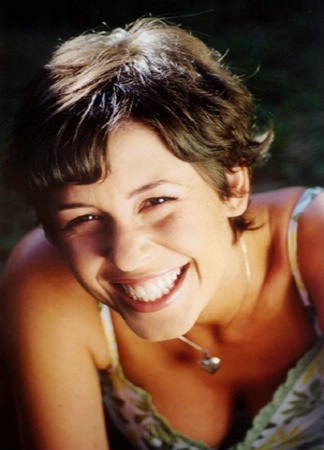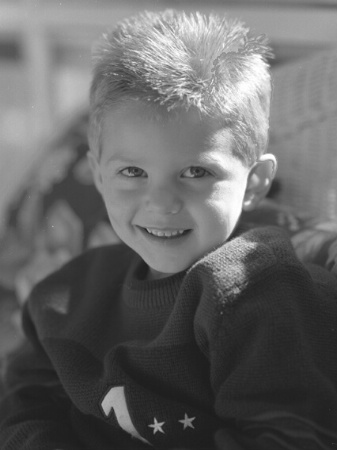
BetterPhoto Member |
|
Shadows in Portraits
During my past 3 months as a beginner of photography, I had a problem. When I take a portrait, usually a horrible shadow comes in the picture, especially in the face or around the eyes. Basically, I have some questions. To avoid this problem, do I need to use a flash during the day time? Or probably take the pictures in a different time of the day? Thanks.
June 18, 2004
|
|
|
Steve McCroskey |
|
Hi Gerardo!
Can you upload a photo so we can see what you are talking about??
June 18, 2004
|
|
|
Rhonda L. Tolar |
|
Are your portraits outside? And yes, I do use a flash during the day for outside portraits: It fills in the shadows, especially if the subject is wearing a hat. Another thing you might try is having the subject lift their head just a bit, to let the sun light up their face. Most people tend to look down, making the eyebrows cast a shadow on the eyes. Good luck!
June 18, 2004
|
|
|
Jon Close |
|
(a) Put more distance between your subjects and the wall/backdrop; (b) Use bounce flash, with a white card on the flash to add fill to the subject's face; (c) Use a flash bracket to raise the flash higher so that the shadow falls below the subject's shoulder; (d) Increase the room's ambient lighting, and if your subject will hold relatively still, drag the shutter (use slower than the top sync speed) to get more background exposure; (e) If these are staged portraits, add 2nd, 3rd lights - studio lights or slaved speedlights.
June 18, 2004
|
|
|
Amanda E. Radovic |
|
|
|
|
|

Gin
Amanda E. Radovic
|
|
|
|
If the portraits are staged then a reflector is a nice option too. It will allow you to maintain the softness of the natural light and put nice big catchlights in the eyes too. You can move the reflector around to see which angle you like the most - it allows you to keep a little facial modeling (gentle shadow play across the facial features which gives a more depth). A reflector can be bought commercially or simply be a piece of white card, polystyrene - use your imagination. For more dazzling effects you can cover with foil - silver or gold or even a mixture of both. The attachment is done with a gold reflector held very close (more dramatic) wiht strong Aussie summer sunlight backlighting my model (sister)!
June 22, 2004
|
|
|
John L. Webb |
|
|
|
|
|

Spiked Champ
Leica 75mm 1.4
John L. Webb
|
|
|
|
In addition to the fine advice above Gerardo, you have to learn to "see" as film sees, not as the human eye sees. Film does not have the span of stops the human eye does and our eyes will often automatically show us detail in a shadow, or lessen the impact of a shadow that film (or digital)simply can not do.
Try shotting in the early morning hours prior to noon and in the afternoon before sundown. Most photographers deem this "sweet light" Look for open shade to shoot your subjects and portraits in and take notes and experiment. It won't be long before you start understanding how you use the light. Good Luck!
June 22, 2004
|
|
|
cec |
|
I shoot outside and inside quit a lot and I almost never use a flash.
Shoot in the shaded area with reflectors and set the ASA to 400.
I find window light give much better result than flash.
"cec.
June 22, 2004
|
|
|
Peggy Wolff |
|
One more suggestion, is if you have a good flash for your camera (not one that is built in to your camera) then I would suggest buying a soft box for it. This softens the light, removes shadows and does not make your background dark. I alost always use a flash for out side portraits. Other wish as Amanda suggested use a reflector. Good luck!
June 22, 2004
|
|
|
Angie M. Nemanic |
|
After reading your responses I have another question. When you shoot outside and you want to use a reflector/bounce card, how do you set it up if your shooting by yourself? Do you use stands or prop it somehow? If you're a one person show things can get hectic while shooting a portrait outside so I'd be curious to hear what you have to say.
June 22, 2004
|
|
|
John A. Lind |
|
I nearly always use flash for serious outdoor portraiture. Trying to use natural daylight alone without doing something to modify it is difficult at best. Light direction, background, pose, etc. cannot be completely controlled simultaneously. For traditional portraiture, diffused lighting is important. It softens the edges of the shadows you mention. Keep subjects out of direct sunlight if at all possible. Overcast days are OK, or in "open shade" using daylight from the sky and not directly from the sun. If it's impossible to get out of direct sunlight (as can happen on a beach or in a desert), put the sun slightly behind the subject and use flash or reflector to fill the front. A sun directly behind someone works for a sihlouette (sans flash), but for other types of portraits, turn the person (or adjust your position) until the sun is about half-way between directly behind them and directly to their side (creates a bit of rim highlighting on the sun side and keeps you from shooting straight into it). If using flash, set exposure as if you are photographing the scene behind the subject and let the flash fill the front of the person. A reflector, even a very efficient one, won't provide enough to do that. Set exposure for the subject's face (from the camera direction), move in tight on them (you don't want much background doing this) and let the background go high key. I use a fair sized softbox on the flash for outdoor and only enough for fill . . . in open shade exposure is set so that the flash provides about 1/3rd and certainly no more than 1/2 the light needed. As Jon suggested, the flash is *always* well above the camera in a flash bracket . . . regardless of camera orientation. I recommend about 10-14 inches from center of lens to center of flash reflector. If you use a camera mounted flash, get as big a softbox for it as is practical and watch working distance that it doesn't get too far. (Don't go below about 50mm in focal length; it will create an unnatural perspective of the face; I use an 85mm lens for tight portraits.) Small softboxes don't do much to soften light and as distance from flash to subject increases, the effectiveness of the softbox decreases . . . it tends to become more like a harsh point source of light again. An alternatives is, as Amanda mentioned, using a reflector. Ensure it's big enough (about 2-foot by 3-foot for 1/3rd portrait of a single person). You'll need something or someone to position the reflector where you want it . . . as close as possible . . . just outside the frame. If you use a stand to hold the reflector, sandbag it! It's like a sail in even the smallest of breeze. You can make do with the reflectorized surface of a "Space Blanket" folded up to about a 3-foot square if you have someone to hold it properly. The surface is a very efficient reflector, and it's quilted to diffuse it. You can usually find them in the serious camping and backpacking stores. A white flat bedsheet folded to the same size can also work. It diffuses reflected light more, but isn't nearly as efficient a reflector. -- John Lind
June 22, 2004
|
|
|
Peggy Wolff |
|
They sell stands that are made for holding reflectors, they have a clamp built in. But I am sure any clamps would work with a tripod. I would also suggest buying the 5 in one reflector. The middle part is called a translucent which you put up in front of the sun so it softens the brightness as it reaches your subject.
June 22, 2004
|
|
|
Tekila Gray |
|
What is the position of your flash when your shooting the picture? if your shooting vertical shots and the flash is on the side of your camera instead of over the camera when you take the picture, you could be causing the shadows
June 23, 2004
|
|
|
|
Log in to respond or ask your own question.
|